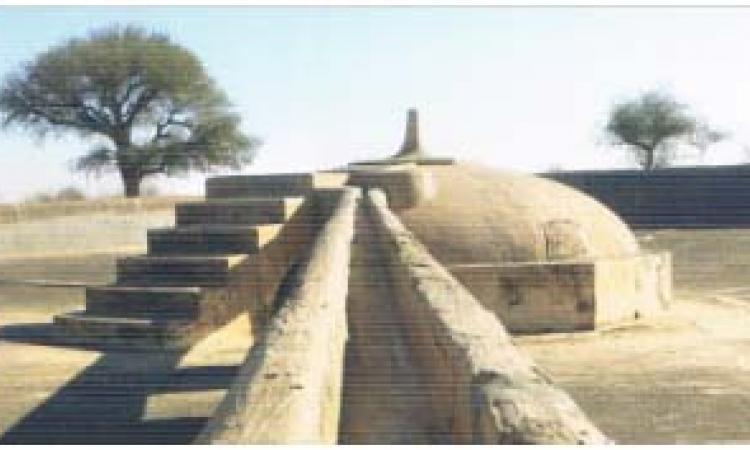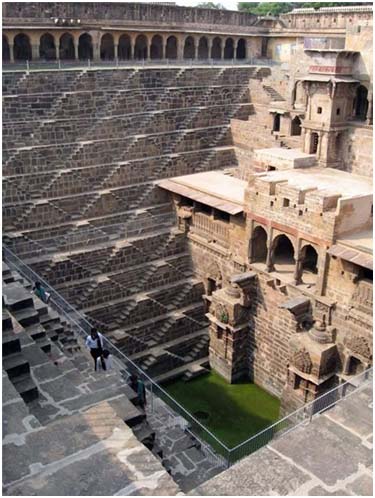
Author and conservationist, Anupam Mishra has spent decades promoting water conservation and management. Through his travels across various states of India, he has been studying and teaching the time-tested techniques of rainwater harvesting. His landmark books on the subject of water like 'Aaj Bhi Khare Hain Talaab' (The ponds are still as good as gold, 1993) and 'Rajasthan Ki Rajat Boondein' (Radiant Raindrops of Rajasthan, 1995) have gained him worldwide recognition. A popular public speaker on environmental issues, MIshra is known for his wisdom and wit. It's no wonder that he was one of the star speakers at the symposium “Touched by water – what connects people to water” at Schiltach, Germany in October 2011.
Renowned speakers took a look at water and its existential, scientific, political and socio-cultural significance. Mishra’s lecture here was based on his learning and insight from studying the culture of water practiced by the local desert communities of Rajasthan. He highlighted the engineering marvels built centuries ago, which were still in use today and also spoke of the water wisdom of traditional desert societies and their social organization in the management of scarce water resources.

He took the liberty of renaming the theme of the symposium to “Touched by very little water”. Drawing the attention of the house to the golden Indian Thar desert, an ‘undeveloped’ region he said that “what is truly surprising, though is the percentage of population with safe drinking water: 99.7 per cent of the villages here in the desert have drinking water. These arrangements are made by a very big government, but not our national government, nor the World Bank, but by an enlightened society, which knows the secrets of the desert and its drops of water”.
The average rainfall in the region is barely 160 mm and groundwater, which is mostly saline, is found 100 meters below the surface. The desert communities are resolute in measuring the scarce rainfall not in centimeters, inches or feet but in millions of raindrops. These countless small, crystal-like drops assure them that nature had provided enough water. Their focus is therefore on catching these silver drops. “There are numerous ways of identifying clouds and of responding to their presence on the ground – all in the collective wisdom of the desert folk”, says Mishra. The local dialect comprises of some 40 different terms describing clouds - some are poetic, some scientific and some political. Some clouds promise you water but do not deliver.

Describing the water harvesting systems, he says that the cleanliness of the structure and its catchment is maintained meticulously. The community distributes the responsibility to clean the floor among the villagers who follow this diligently to make sure that no dirt gets washed into the water storage.
The attached piece by Mishra also comprises an afterword by Annie Montaut, Professor at the 'Institute National des langues orientales' in Paris. She provides an in-depth look at the basic principles of Mishra’s work. She begins by saying that nearly fifty eight per cent of western Rajasthan is comprised of sand dunes and low barren hills. In spite of grim descriptions by early European travelers, people visiting this region do not have the feeling of being in a desert. Montaut says, “even in Jaisalmer, the least populated district (four inhabitants to the square kilometer), one can see villages and fields everywhere, at least during the monsoons. This is very different picture from the Sahara or Australian deserts, an image in total contrast to the stereotype of deserts being arid, sparsely populated and on the fringes of civilization… If Rajasthan offers a very different impression of a desert, the explanation lies in the way the water it receives is so parsimoniously managed, one could say drop by drop”.
In his books and speeches, Mishra documents how the ingenuity and patience of people down the centuries have made it possible for life to be maintained in the desert, with inhabitants applying their technical knowledge to collect each and every drop. Mishra says that “drops become all the more precious given their scarcity. It is to each precious drop that local society has dedicated its effort, its love, its intellligence, in fact all possible human means to obtain optimal advantages. But local society does not view itself as the sole agent in this endeavour to make the desert suitable for human life. More specifically, it acknowledges a partnership from the offset; human intervention is always associated with supernatural forces and all the concomitant ethics deriving from this interaction. In fact, the myth of the practice of water harvesting in Rajasthan is founded on human activity responding to a divine gift, raindrops”.
Mishra details the ingenuity and patience of people in conserving water through the times to make life possible in the desert. He talks about the kuins - deep narrow wells that access the capillary water, i.e., the water trapped in the soil capillaries. He also talks of ponds, kunds and tankas, all meant for storing water and making agriculture possible in both the kharif and rabi season. He describes how in some cases, water in entire seasonal streams are retained and their beds used for cultivation. In these systems known as khadins, mounds of earth on the three sides retain water making kharif (monsoon) and rabi (winter) crop harvests possible.
Montaut says that each of these techniques has a particular function in the social and ethical fabric of local communities. In fact “this culture offers a way to manage natural and social resources and to integrate human beings with the natural environment.”
Anupam Mishra’s work “is an ode to local knowledge based on deep knowledge of the ecology of the place”, she says.
/articles/touched-very-little-water